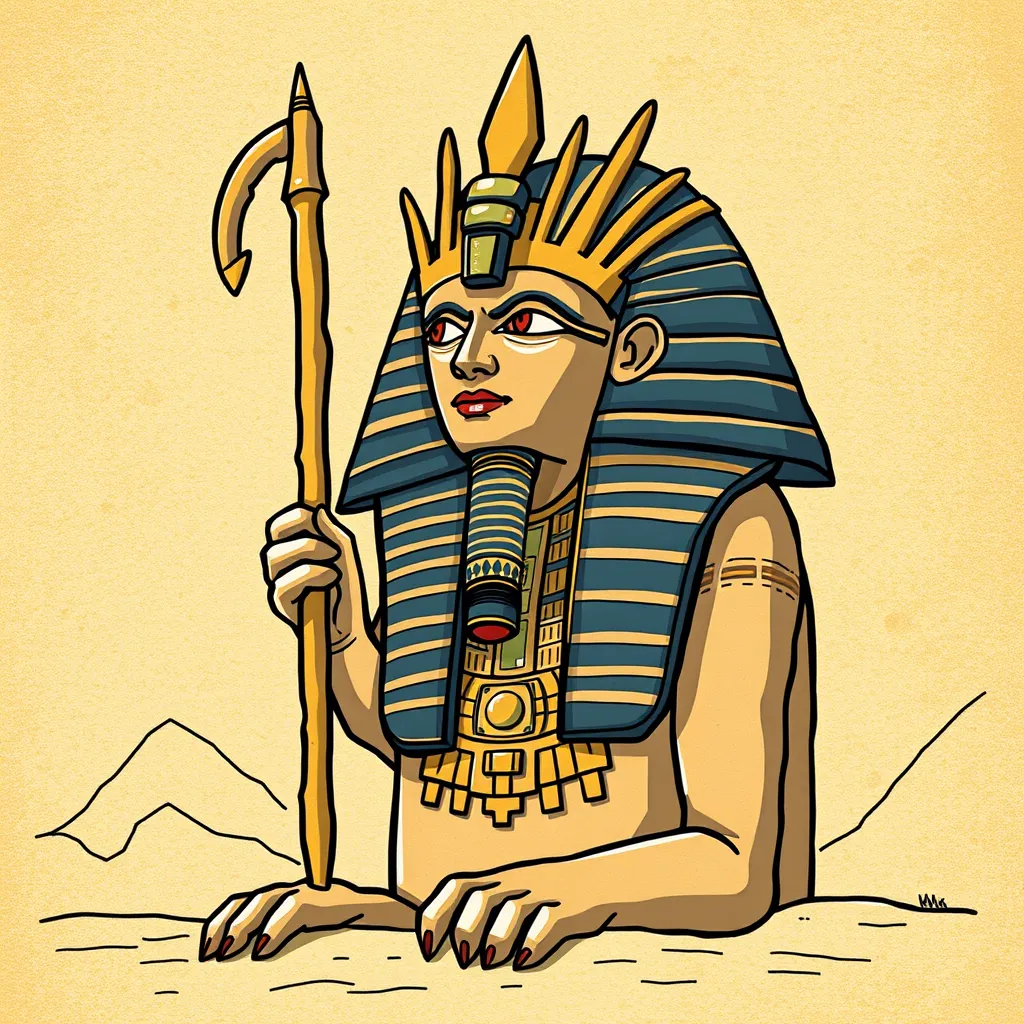The Egyptian Book of the Dead: An Illustrated Guide
I. Introduction to the Egyptian Book of the Dead
The Egyptian Book of the Dead, known in ancient Egyptian as the “Coming Forth by Day,” is a collection of spells, prayers, and incantations that were intended to assist the deceased in navigating the afterlife. This text holds immense significance in ancient Egyptian culture, serving as a guidebook for the soul’s journey through the afterlife.
Historically, the Book of the Dead originated during the New Kingdom period of ancient Egypt, around the 16th century BCE. It evolved from earlier funerary texts, reflecting the beliefs and practices surrounding death and the afterlife. The purpose of the Book of the Dead was to provide the deceased with the knowledge and tools necessary to overcome obstacles in the afterlife, ensuring a safe passage to eternal life.
II. Historical Development of the Text
The Book of the Dead did not emerge in isolation; it evolved from earlier texts such as the Pyramid Texts and the Coffin Texts. The Pyramid Texts, dating back to the Old Kingdom, were inscribed within royal tombs and were primarily focused on the pharaohs. The Coffin Texts, which appeared in the Middle Kingdom, expanded access to funerary knowledge to non-royal individuals.
Key manuscripts of the Book of the Dead include the Papyrus of Ani, the Papyrus of Hunefer, and the Papyrus of Nebseni, each showcasing unique spells and illustrations. These manuscripts not only served funerary purposes but also influenced the broader Egyptian funerary practices, emphasizing the importance of rituals, offerings, and the proper recitation of spells.
III. Structure and Content Overview
The Book of the Dead is composed of various key components, including spells, prayers, and rituals intended to guide the deceased through the afterlife. These texts are commonly divided into:
- Spells for protection
- Prayers for guidance
- Rituals for resurrection
Common themes throughout the Book of the Dead include judgment, resurrection, and protection. The idea of judgment is particularly significant, as it represents the belief that one’s actions during life would be weighed against the truth and morality during the afterlife.
Notable sections of the Book of the Dead include the “Weighing of the Heart” scene, where the deceased’s heart is weighed against the feather of Ma’at, symbolizing truth and justice. Success in this trial leads to eternal life, while failure results in the soul’s annihilation.
IV. Iconography and Illustrations
Illustrations play a crucial role in the Book of the Dead, providing visual context to the spells and guiding the deceased through various challenges. These images are rich in symbolism and often depict deities, rituals, and the journey through the Duat.
Common motifs and symbols found in the Book of the Dead include:
- The Ankh (symbol of life)
- The Djed (symbol of stability)
- The Scarab (symbol of rebirth)
Famous illustrations from specific manuscripts, such as the Papyrus of Ani, showcase the intricate artistry of ancient Egyptian culture, illustrating scenes of judgment, the Duat, and the deceased interacting with various gods and goddesses.
V. The Journey Through the Afterlife
The journey through the afterlife, or the Duat, is a central theme in the Book of the Dead. The Duat is depicted as a complex underworld filled with challenges and trials that the deceased must overcome to attain eternal life.
Significant trials faced by the deceased include:
- Confronting monstrous beings
- Navigating treacherous landscapes
- Answering questions posed by deities
One of the pivotal figures in this journey is Osiris, the god of the afterlife. The weighing of the heart ceremony, where the deceased’s heart is weighed against the feather of Ma’at, is a critical moment. If the heart is lighter than the feather, the deceased is granted passage into the Field of Reeds, a paradise representing eternal life.
VI. The Book of the Dead in Popular Culture
The influence of the Book of the Dead extends beyond ancient Egypt into modern literature, film, and art. Its themes of death, resurrection, and the afterlife resonate with contemporary audiences, inspiring numerous adaptations and interpretations.
Modern representations often draw from the imagery and concepts found in the Book of the Dead, showcasing its lasting impact on popular culture. The Book of the Dead serves as a symbol of humanity’s fascination with life after death, continuing to inspire artists and storytellers.
VII. Archaeological Discoveries and Significance
Archaeological discoveries related to the Book of the Dead have provided invaluable insights into ancient Egyptian beliefs and practices. Key finds include well-preserved papyri, tombs, and artifacts that reveal how the Egyptians prepared for the afterlife.
Insights gained from these discoveries include a deeper understanding of:
- The importance of funerary rituals
- The evolution of religious beliefs
- The artistry and craftsmanship of ancient texts
The preservation and study of these ancient texts are vital in modern times, allowing scholars to piece together the beliefs and practices of an extraordinary civilization.
VIII. Conclusion: The Enduring Legacy of the Book of the Dead
The Egyptian Book of the Dead remains a crucial resource for understanding ancient Egyptian beliefs about death and the afterlife. Its impact on our knowledge of this civilization is profound, providing a window into their spiritual and cultural values.
Today, the Book of the Dead continues to hold relevance, symbolizing humanity’s ongoing quest for understanding beyond the grave. Its themes and narratives encourage further exploration and study, inviting both scholars and enthusiasts to delve into the mysteries of ancient texts and their timeless lessons.




